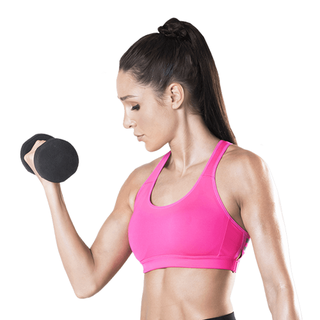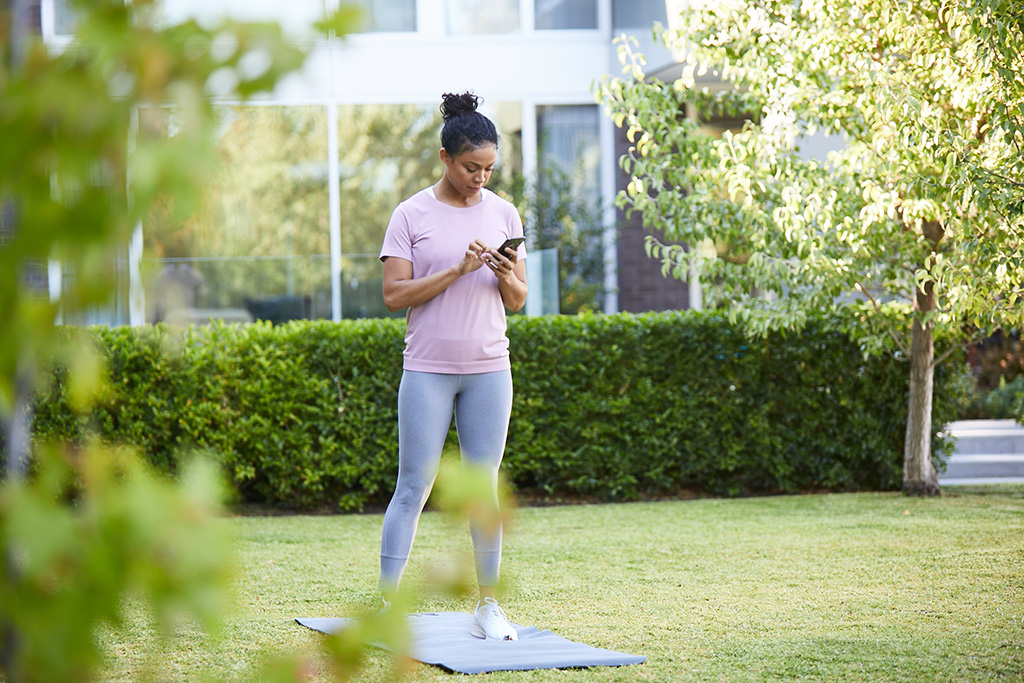My Guide To Cardio For Beginners

February 23, 2020

If you are just beginning your fitness journey and haven’t exercised before, getting started can be daunting.
According to the World Health Organisation, anyone aged 18-64 should do at least 150 minutes of moderate-intensity aerobic activity every week in order to improve their overall health.
This might sound like a lot if you are a complete beginner, but I’m here to show you how you can get started with cardio to reach this goal every week.
Even if it feels impossible right now, I’m telling you that you CAN do it!
Here’s my guide to getting started with cardio.
Find out:
How to do cardio for beginners
First, let’s take a step back and talk about what cardio actually is and how it can benefit your training.
Cardio is exercise that elevates your heart rate — it can be long, slow activity like cycling or walking, or it can be short, intense activity that leaves you breathless. Doing cardio helps you to burn fat, improve your metabolism and strengthen your heart and lungs.
Your resting heart rate can indicate how physically fit you are, so keeping track of your heart rate during cardio can help you to modify the intensity in order to help you reach your fitness goals.
You don’t have to go to the gym to do cardio — you can do it almost anywhere, even in the privacy of your home!
Of course, if you want to go to the gym you can. I’ll give you some examples of both so you have options to try.

Low impact cardio
If you aren’t used to running or jumping, starting out with some low-impact options can help to build your fitness without putting excessive strain on your joints.
If you use the gym or you have access to outdoor gym equipment, using the elliptical trainer or exercise bike is a low-impact way to build cardiovascular fitness.
Swimming or water-running is another low-impact option if there’s a pool nearby. In summer you might even take your cardio workout to the beach!
At-home cardio options with low-impact include gentle aerobic exercises like skipping, walking or star jumps — you might choose a few exercises you can combine in a short 10 minute circuit for a quick cardio workout.
If you’re familiar with my programs, you’ll know that I recommend three low-intensity cardio sessions per week. And if you’re just starting out with fitness, beginning with three low-intensity sessions a week can be a great way to transition into a full training regimen.
If you want to build up to using plyometric (jumping) exercises for your workouts, start with a low-impact variation of star jumps and increase the intensity gradually as your body adapts.

Do five minute workouts
One of the most common workout excuses I hear is that women don’t have enough time. If this is why you’ve been putting off doing cardio, I can tell you now that you can start with just five minutes!
While longer workouts are great if you have the time, you will still reap the benefits of just five-minutes of cardio!
Pick your favourite five exercises and do one minute of each, like these five fast bodyweight exercises. I promise you’ll feel better once you have!
Add in strength exercises
Cardio, like running or walking, is great but when you combine strength training with cardio, you can really accelerate your results!
My workouts combine strength and cardio in high-intensity circuits, designed to get your heart pumping and your muscles working hard. Try this full-body workout you can do at home to see what they're like!
Strength training is great for helping you to maintain bone density and increase lean muscle.
When you combine strength training with cardio you will always have variety in your training that keeps it interesting and helps you to avoid a fitness plateau.
How to use intervals
Once you have built up your fitness with three sessions of 30 minutes of low-intensity exercise each week for around four to six weeks, you might want to try a high-intensity cardio session.
High-intensity interval training (HIIT) is a great way to fit in your workouts when you are short on time! Because of the intensity, they are super effective as your body keeps burning energy after the workout.
HIIT involves work-to-rest intervals. Adjust the work to rest ratios to suit your level of fitness. As your fitness improves, your work time will eventually become longer than your rest.
For beginners, try starting with a 1:4 work-to-rest ratio. For example, 15 seconds of work and one minute of rest, and continue to reduce the ratio as you gain fitness.
HIIT workouts tend to be quick. An entire HIIT workout is usually around 15-20 minutes long, but even 5-10 minutes has significant benefits!
To do a HIIT workout at home, you can combine exercises like squats, burpees and push-ups to create an intense workout.
If you have access to a gym, you can do intervals using the elliptical, rower, and even laps in the swimming pool.
If you are new to HIIT, always make sure to seek guidance from a fitness or health professional to make sure that this training style is suitable for you.
As you get more experienced with HIIT, you might try a Tabata workout. This workout structure involves 20 seconds of ‘work’ with 10 seconds ‘rest’. As they are only short bursts of work, you should aim to push yourself really hard every round to get the maximum benefits!
Kickstart your fitness journey with cardio training
The key to fitness is to choose something that you ENJOY and that you’ll want to do.
With cardio, a little can go a long way — even if it’s just five minutes each day, it can result in serious gains like significantly boosting your mood.
And if you have a busy day, you can incorporate cardio by taking the stairs instead of the lift, or riding your bike to work! Be creative and most of all have FUN with it.
What are you waiting for? You can include some cardio in your day today!